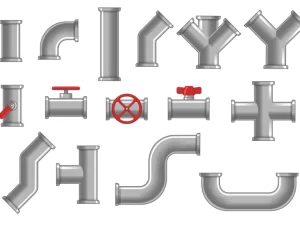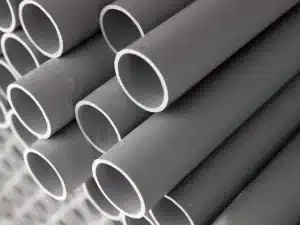What is a Floating Ball Valve? A Complete Guide
Industry operations depend on liquid and gas flow control and need valves as essential elements. To obtain high-quality floating ball valves, it is necessary to select appropriate suppliers. The suppliers maintain various ball valve options for pressure and temperature requirements. This blog post explains all relevant information about floating ball valves, including working mechanics, material requirements, and advantages during installation. It also contains essential information for engineers, plant managers, and procurement specialists to source the best valves from trusted floating ball valve suppliers.
How Does A Floating Ball Valve Work?
The floating ball valve is one of the most popular quarter-turn valves. It allows users to control the flow of gases or liquids. The valve consists of a drilled, free-moving ball that rests between two sealing seats inside its body. The ball operates via seat compression and fluid pressure, removing the need for extra support in trunnion-mounted ball valves.
When in the closed position, the valve body pressure and seat compression allow the floating ball to self-adjust, ensuring an effective seal.
Working Principle of a Floating Ball Valve
Valve in Open Position
The operator turns the actuator, and the ball rotates until its bore aligns with the pipeline. The valve design enables free passage of fluid or gas with low dependence on resistance factors. The flow path of ball valves moves in a straight line, which minimizes both pressure drops and pipeline turbulence.
Valve in Closed Position
Holding the actuator at a right angle locks the solid portion of the ball into place, blocking off the pipeline. Upstream pressure pushes the ball against the downstream seat, ensuring a leakproof seal. This shutoff mechanism maintains its operational effectiveness even under high-pressure conditions.
Sealing Mechanism
The slight movement of the floating ball enhances the sealing process. When the valve is closed, the fluid pressure forces the ball to press against the downstream seat, improving the sealing performance. This self-sealing feature allows the valve to work efficiently without requiring complex additional components.
This simple yet effective working principle makes floating ball valves a preferred choice across various industries. A leading ball valves supplier provides different sizes and pressure ratings to match specific industry requirements.
Key Components of a Floating Ball Valve
To understand how floating ball valves function, it’s essential to know their key components:
Valve Body: The outer layer that holds all components together.
Balls: They are a spherical component with a hole through the center, responsible for controlling fluid flow.
Seats: are sealing rings made of PTFE or other soft materials that help achieve a tight seal.
Stem: A shaft that adjoins the ball to the handle, allowing it to rotate.
Handle or Actuator: Used to rotate the ball to open or close the valve.
Seals and Gaskets: Prevent: leakage and enhance the valve’s durability.
Leading stainless steel ball valve suppliers offer ball valves made with premium materials to enhance strength and resistance against corrosion.
Advantages of Floating Ball Valves
Floating ball valves offer several benefits, making them a popular choice for various industrial applications:
Reliable Sealing
The floating ball uses a specific mechanism to compress the ball tightly against the seat, creating a solid seal. This method of application improves the tight seal performance.
Simple Operation
The floating ball valve offers a simple quarter-turn operation, allowing quick and efficient flow control. This design supports manual handling for straightforward applications and automated control for seamless integration into advanced industrial systems.
Versatile Applications
The valve operates effectively with various fluids, from liquids to gases, including slurries. The aluminum bronze material is versatile, matching the needs of the oil and gas sector, chemical processing, and water treatment operations.
Compact and Lightweight Design
Floating ball valves are compact and lightweight, making them easy to install and maintain. These technical specifications enhance their versatility, allowing them to be used efficiently across different valve systems.
Cost-Effective
Floating ball valves provide excellent durability and efficiency at more affordable costs than other complex valve types. Their simple yet robust construction reduces manufacturing and maintenance expenses.
Many floating ball valve suppliers offer customization options to meet specific operational needs, further enhancing their usability.
Common Applications of Floating Ball Valves
Floating ball valves are widely adopted in various industries for their simple operation and reliable performance. Some common applications include:
1.Oil and Gas Industry
The oil and gas industry uses floating ball valves to regulate crude and natural gas flows and product transfers through pipelines and refineries.
2.Chemical Processing
Floating ball valves maintain thorough control and safety by regulating hazardous fluids.
3.Water Treatment Plants
The efficient control of water flow is achieved through these valves as part of municipal and industrial water systems.
4.Power Plants
The proper power generation operation depends on floating ball valves, which direct steam, cooling water, and other essential fluids.
5.Pharmaceutical Industry
These valves enable strict fluid control during pharmaceutical medicine production and medical fluid processing.
6.HVAC Systems
These valves control water or air movements in heating, ventilation, and air conditioning systems. The best stainless steel ball valve suppliers offer customized floating balls that suit these applications and achieve peak performance.
The applications of floating ball valves depend on the industrial project’s demands and outcomes. Sourcing these ball valves from certified high-pressure ball valves suppliers ensures the valves meet the extreme conditions of projects.
H2: Floating Ball Valve vs. Trunnion Ball Valve: Key Differences
| Feature | Floating Ball | Trunnion Ball |
|---|---|---|
| Ball Support | The ball is held between seats and moves slightly | The ball is fixed with mechanical supports |
| Pressure Levels | Low to medium pressure | High-pressure applications |
| Sealing Mechanisms | Relies on fluid pressure to push the ball against the seat | Uses mechanical support for better sealing |
| Cost | Affordable | More expensive due to the complex design |
| Common Uses | General industrial use | Oil and gas pipelines, high-pressure applications |
Material Selection for Floating Ball Valves
The material used in a floating ball valve determines its durability and suitability for different environments. Common materials include the following:
Stainless Steel: Resistant to rust, making it ideal for harsh environments.
Carbon Steel: Strong and cost-effective, commonly used in oil and gas applications.
Brass: Suitable for water and low-pressure applications.
PVC/CPVC: Lightweight and chemical resistant, used in water treatment.
Reputable floating ball valve suppliers offer corrosion-resistant floating ball valves that last longer.
Installation and Maintenance Tips
The following best practices will sustain the operational life and peak performance of floating ball valves:
To achieve efficient operation, the pipeline requires proper alignment with the valve during installation.
Any pressure beyond the necessary amounts will harm the system’s internal parts.
The system requires regular inspections to detect leaks, corrosion, and wear.
Some valves need lubrication to achieve smooth rotational motions.
Obstructions or environmental elements that may impact valve function should be removed.
Selecting trusted floating ball valve suppliers enables industries to receive installation guidance and maintenance recommendations.
Conclusion: Why Choose a Floating Ball Valve?
A floating ball valve is an effective and economical flow control device throughout different industrial applications. Mariners worldwide prefer floating ball valves because of their basic operation system, small size, and excellent sealing capabilities. Selecting floating ball valves from reputable suppliers results in superior operational lifetime and peak performance. Additionally, sourcing quality valves from trusted high-pressure ball valves suppliers is vital for obtaining valves to withstand extreme pressure conditions.
FAQs
Q1: What is the main difference between a floating ball valve and a trunnion ball valve?
When a floating ball valve opens, the ball moves toward the sealing surface, ensuring complete contact upon closure. A trunnion ball valve performs at high pressures because it contains a ball secured by additional support structures.
Q2: Are floating ball valves suitable for high-pressure applications?
The floating ball valve works properly for low—or medium-pressure systems. However, selecting a trunnion ball valve is better if your system operates under extremely high pressure. High-pressure operations create difficulties for floating ball valves since they depend on the pressure force to tightly push the ball seal down.
Q3: How do floating ball valves achieve tight sealing?
The sealing function of floating ball valves comes from fluid pressure, which drives the ball into contact with the sealing surface. The adjustable movement of the ball enables automatic adaptation to stop leaks from occurring. The sealing material comprises Teflon (PTFE) or metal functions to provide strong, leak-proof closures to the system.
Q4: What industries commonly use floating ball valves?
Floating ball valves are used in industries such as water treatment, chemical plants, food processing, oil and gas, and power plants. They are widely used for their ease of operation, reliability, and cost-effectiveness, making them essential wherever quick and efficient fluid control is needed. Their ability to handle different liquids and gases makes them a go-to choice for many industries.
Q5: How often do floating ball valves need maintenance?
The necessary repair schedule for floating ball valves is low, but scheduled inspections produce longevity benefits. Regular inspections should occur once every 6 months up to 1 year to verify their leak-free and intact condition.







